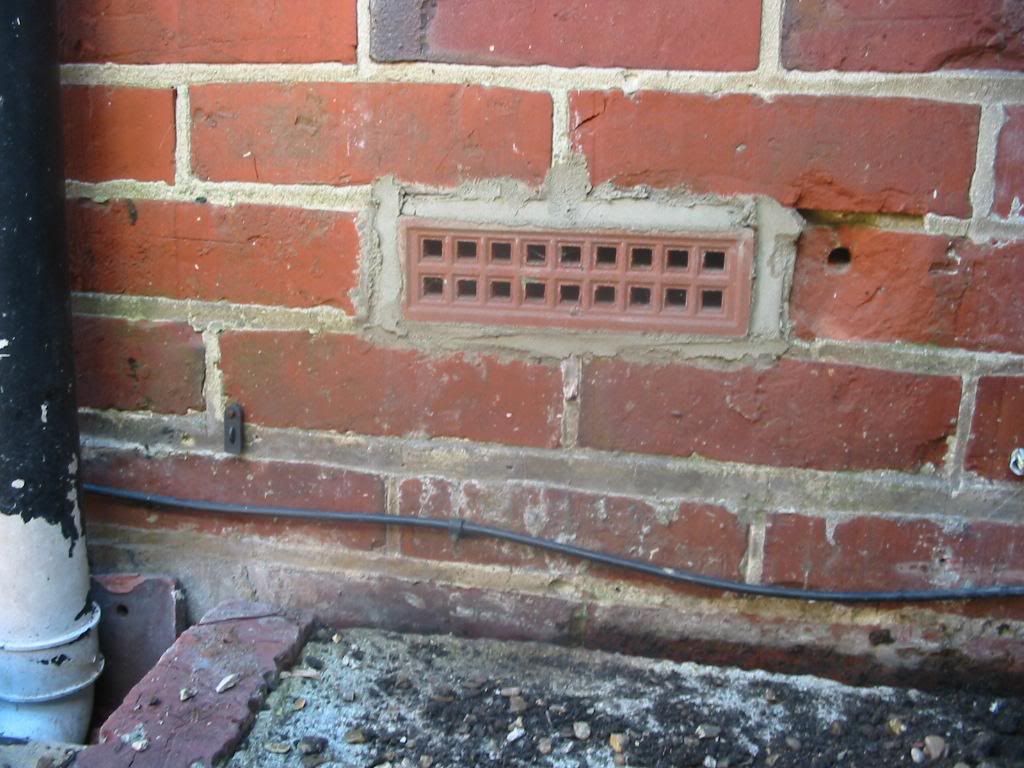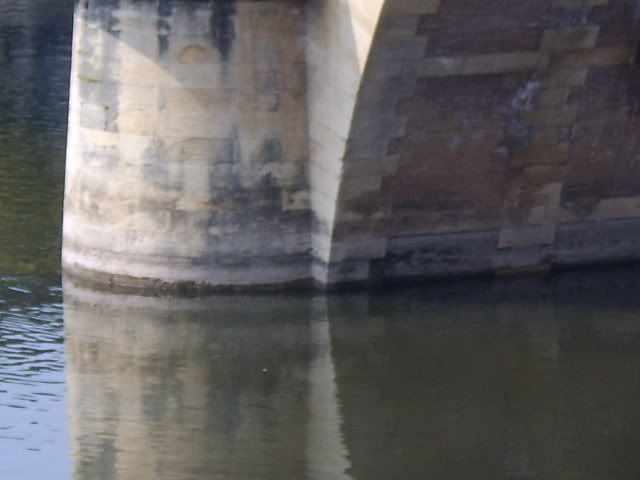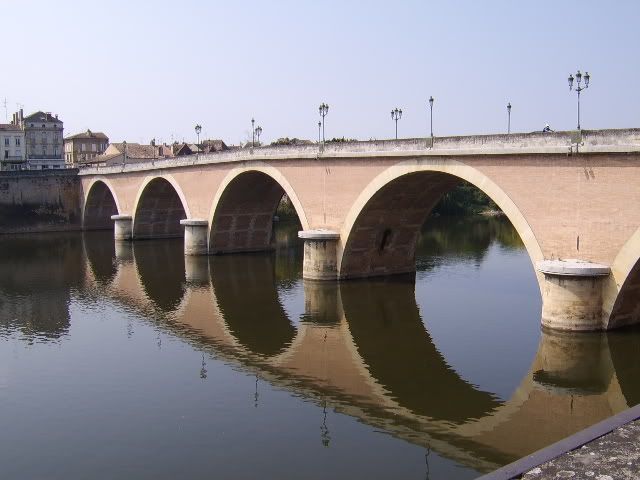Thanks for the suggestions and such clear and useful diagrams - very informative.
In response to the points raised:
Tell the vendors to sort out the problem or else you won't buy the house.
Too late, have now exchanged.
I wonder where your airbricks are
They are in the next but one course above the outer skin dpc - in the photo below, the damp course runs in the mortar course above the cable.
possible, but not easy, to get a lot out with a powerful aquavac
I think, in the first instance, I'll try to access the cavity via 2-3 points on then outside wall in the row below the dpc, and the hole in the inner wall under the floorboards (under the inner dpc).
At each point I'll remove two bricks & see if I can clear out the cavities at the 3 levels of bridging (from my intitial probings): just above the outer dpc & above & below the inner dpc.
Unless anyone knows or can suggest any better solutions: I'm going to try a combination of:
-
scraping out using a shave hook or similar
- attaching, somehow, the shave hook to some flexible pipe to get a longer reach -
maybe plastic water feed pipe?
-using a hose on a vacuum to aid the above or vice versa. Material maybe a little damp.
Any suggestions for suitable 35mm hose?
I agree with Masona that you should really take up the concrete outside and lower the level.
. Yes I should but, as the drive is a fairly poor hotch potch of patches and will need upgrading as a whole. I'd rather do this later when I can afford the do the whole lot. When, not if, I do, I’ll certainly follow Masona's excellent advice.
I'm hoping that clearing the cavities will reduce the damp to acceptable levels until then - if not I'll have to cut in a gravel filled gully as in Masona's diagram (nice diagram M)
Thanks for the help so far - any help or suggestions for the scraping & hosing gratefully received.
G




